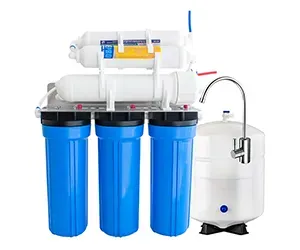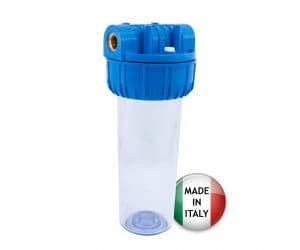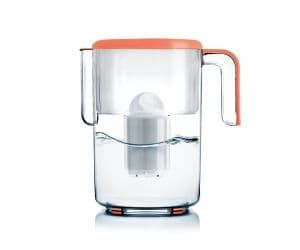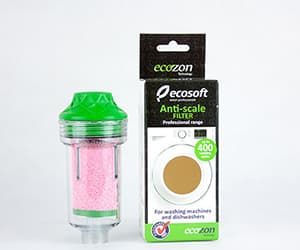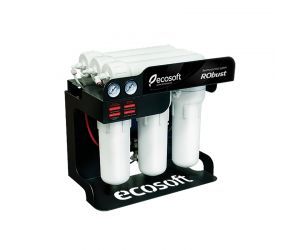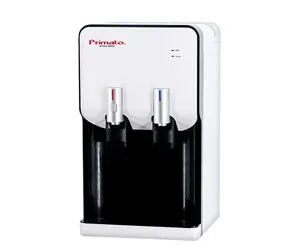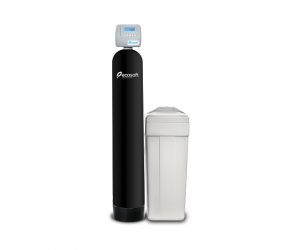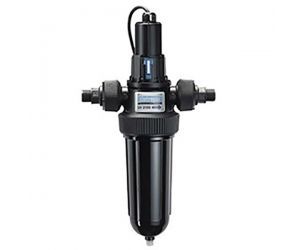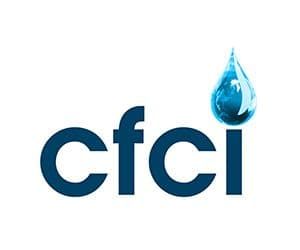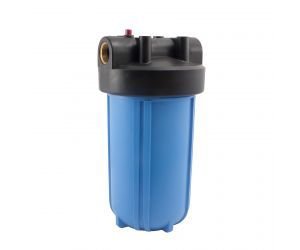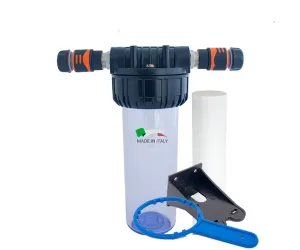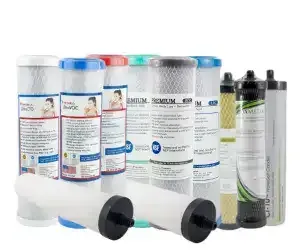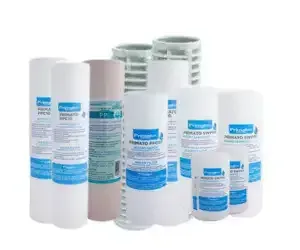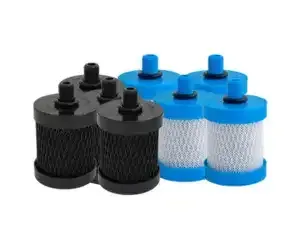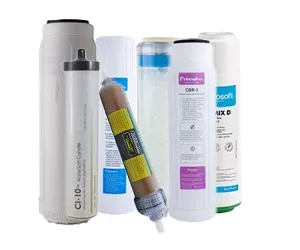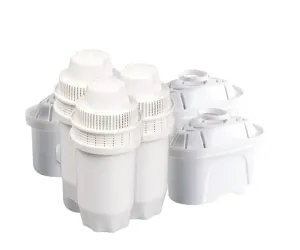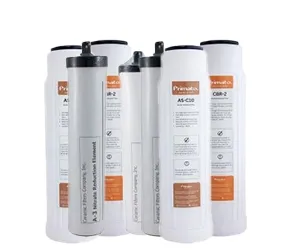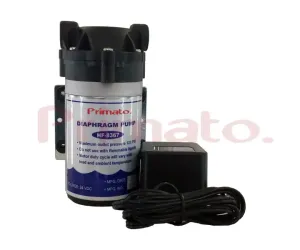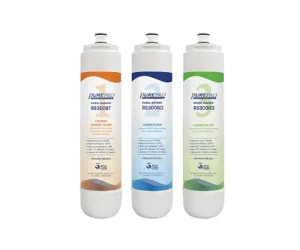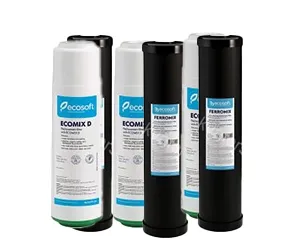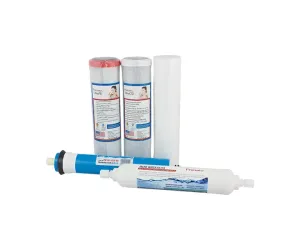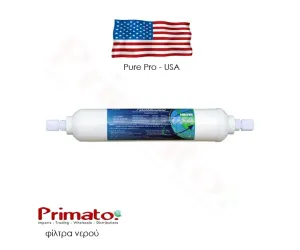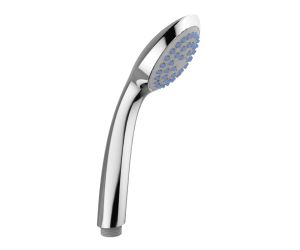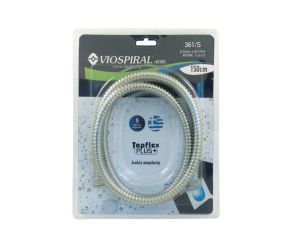What contaminates drinking water?
In this article, we will present the main contaminants of the water we drink:
SODIUM CHLORINE-HYPOCHLORIDE
Chlorine was discovered in 1774 by the Swedish chemist Carl Scheele. It is symbolized by the letters CL. Its name comes from the Greek word Chloros = Green. It is produced by electrolysis of water in salt. Sodium Hypochlorite (Hypochlorite Acid) is the main disinfectant in water.
Chlorine ions react and destroy the cell walls of microorganisms. Chlorine as a gas in itself was widely used in many wars with tragic results. The presence of chlorine in the water is necessary to characterize drinking water as microbiologically safe. With the chlorination of water we follow the general rule, from the greater evil (presence of microbial load in the water), we prefer the lesser evil (presence of small controlled doses of chlorine). One of the most important consequences of chlorination is that its reaction with the proteins of microorganisms creates chloramines. A by-product of chlorination from its reaction with organic carbon present in water is trihalomethanes, chloroform, bromoform, dibromochloromethane, and bromodichloromethane. The total content of trihalomethanes in drinking water should not exceed 100 μg / l.
The experimental use of chlorine began in 1890 to fight diseases such as cholera and typhoid. It soon gained widespread acceptance due to its low cost and immediate effectiveness in "killing" any dangerous germs in the water. Chlorine has allowed population centers to spring up and thrive without outbreaks.
The problem with chlorine is that it is a known poison and the safety of drinking chlorinated water in the long run (throughout our lives) is uncertain. Chlorine also reacts with water and rotten organic matter such as leaves, sediments, etc. to form a family of chemicals called trihalomethanes or THM's, which contain chemicals such as formaldehyde and formalin and are both extremely carcinogenic compounds even in small quantities.
COLOR
Color is not compatible with drinking water. It can be due to inorganic substances but also to colloidal and dissolved organic matter. Color in drinking water does not necessarily pose a threat to human health. Very often the discoloration may be due to maintenance work carried out on the water distribution network. It may also be due to the presence of dyes in solution, either plant roots or minerals (salts, iron from corrosion of pipes).
TURBIDITY
Turbid water must be checked for contamination. In drinking water, measuring turbidity is one of the most important parameters in determining water quality. The desired value of turbidity in drinking water is & lt; 5NTU. By turbidity we mean the absence of clarity in the water. More specifically, turbidity is the resistance of water to the passage of light and is mainly due to the presence of fine particles, inorganic and organic materials which are suspended or found in colloids and are scattered in the liquid phase of water. The big problem with turbidity is that it renders chlorination ineffective.
UNPLEASANT TASTE AND ODOR
All waters have their own special and unique taste. Unpleasant taste that is usually accompanied by bad odor is caused in drinking water by various chemicals, as well as by dissolved organic matter, but it is possible that it is due even to the presence of microorganisms and gases dissolved in water. High solids concentration (TDS) above 1000mg / l can also cause an unpleasant taste in drinking water.
The concentration of total dissolved solids (TDS) should not exceed 500mg / l. This doesn’t mean that a higher concentration is considered a pollutant. Some dissolved salts such as magnesium chloride (Mgcl2) can cause a taste and odor problem in drinking water. But what most people perceive as bad taste and smell is the presence of residual chlorine in the water. However, the biggest problem caused by chlorination is the formation of compounds by the reaction of chlorine with the organic components of water. Such compounds are chloroform, dichloromethane, etc., also known as chlorinated hydrocarbons (THM's). Water with a very strong taste and smell should be checked for any contaminants.
VOCs
Under the general term Volatile Organic Compounds (VOCs) is included a very large and particularly harmful group of drinking water contaminants such as pesticides, herbicides, solvents, free monomers, etc. It is the result of industrialization in large urban centers and intensive agriculture in rural areas. Water pollution from volatile organic compounds is now very common and is an ever-increasing problem. They can enter water due to a variety of factors. Benzene, for example, can enter drinking water from leaking underground petrol and oil fuel tanks. Dichloromethane, for example, is a solvent, widely used in industry and can end up in drinking water from industrial waste. Trichloroethylene is used by the chemical industry as an ingredient in detergents. Contamination of drinking water by the use of pesticides and herbicides in agricultural crops is also very common. The chlorination of water itself creates by-products that are more dangerous than chlorine itself. Unfortunately, the list of volatile organic compounds (VOCs) is long and endless. Airborne contamination is almost everywhere, and is one of the problems that will be exacerbated in the future.
CHLORIDES (CL)
At very high concentrations in the drinking water, chloride ions give a sweet taste. In coastal areas, they are probably due to the penetration of seawater. In other cases, chloride ions come mainly from the erosion of the rocks. However, they can also be due to the use of fertilizers, sewage, but also industrial waste. They are mainly sodium (Nacl), potassium (Kcl), calcium (Cacl2) and magnesium (Mgcl2) salts. They do not have a direct effect on human health. Their maximum parametric value is set at 250mg / l.
SULFATES (SO)
These are the sodium, calcium and magnesium sulfates. At concentrations above 700mg / l, they cause an unpleasant taste in the water. The main source of sulfate ions in drinking water is rainwater. They can also come from sedimentary rocks, which contain calcium sulfate or silicon sulfate. Their maximum parametric value is set at 250mg / l.
NITRATES (ΝΟ3)
Nitrates are the last stage of oxidation of ammonia in water and their detection in drinking water must be addressed immediately. They are mainly due to the fertilizers of agricultural crops, but they can also come from human feces. Nitrates are and will be, even more so in the future, the biggest problem of water pollution. Nitrate pollution is a scourge that is spreading. Their higher parametric value is set at 50mg / l. Nitrites (NO2) are the intermediate stage of ammonia oxidation. Their maximum parametric value is set at 0.5mg / l.
AMMONIUM (ΝΗ4+)
Ammonium ions are usually a sign of contamination of drinking water by feces. Sometimes, however, the contamination can be due to minerals. They create a problem of unpleasant taste and odor in drinking water. But the most important problem they create is that they make the chlorination of water ineffective to a large extent. Their maximum parametric value is set at 0.50mg / l.
FLUORIDES (F-)
Fluoride is present in water in the form of dissolved fluorides. Small concentrations up to 1mg / l are considered beneficial to human health. Concentrations of fluoride are found mostly in groundwater and rarely in surface water. Their maximum parametric value is set at 1.5mg / l.
LEAD (Pb)
Lead is widely used in industry and is therefore one of the heavy metals that are widely dispersed in the environment. Its presence in water is a very big problem, because it is one of the most toxic metals.
It enters drinking water mainly from the erosion of lead plumbing, but its presence may also be due to industrial pollution. Lead in small quantities of course is present in all natural waters. In recent years, the use of lead as an additive in gasoline, mainly for increasing octane, but also its use in various insecticides and dyes have greatly aggravated the problem. The problem is of great concern if we take into account that lead acts cumulatively on the human body. Its maximum parametric value is set at 10mg / l.
CHROMIUM (CR)
Its name comes from the Greek word color. It is found in drinking water in two forms, as trivalent chromium and as hexavalent chromium. The big problem with drinking water is hexavalent chromium (CR6 +) and it is found almost exclusively, because hexavalent chromium salts are very soluble in water. Hexavalent chromium usually pollutes surface waters and the contamination comes mostly from metallurgical industries.
Hexavalent chromium contamination must be treated immediately, because its chemical compounds are very toxic and cause mutations in the human body. Its maximum parametric value is set at 50mg / l.
COPPER (CU)
Significant amounts of copper dissolve in drinking water from the corrosion of copper pipes in water supply networks. If the water remains stagnant for many hours in the pipes, the concentration of copper in the drinking water can exceed 20mg / l.
Copper in large concentrations slightly colors the drinking water and gives it an astringent taste. Its maximum parametric value is set at 2mg / l.
ARSENIC (ΑS)
Arsenic is a known poison. Concentrations of arsenic above the limits in drinking water are found in several areas of Greece and around the world. The natural sources of arsenic are volcanic rocks, but it can also come from the decomposition of plant organic matter. It is found in water in two forms. The pentavalent arsenic and its most toxic form, the trivalent arsenic. The big problem in drinking water is the trivalent arsenic which is carcinogenic. Most natural waters contain arsenic in concentrations usually above 5mg / l. Its maximum parametric value is set at 10mg / l.
MERCURY (Hg)
Mercury can enter drinking water as a waste of the chemical industry as it is widely used in the electrical equipment industry, in paint manufacturing, in the paper industry and in the production of fungicides.
Inorganic mercury is toxic but not as toxic as organic mercury, mainly in the form of methylmercury (CH3Hg +). Its maximum parametric value is set at 1mg / l.
CADMIUM (Cd)
It comes mainly from industrial waste and corrosion of galvanized pipes. In soft waters with low pH, cadmium concentrations can be found because these waters are more corrosive. Cadmium is one of the most toxic metals. Cadmium contamination in drinking water should be treated immediately. Its maximum parametric value is set at 5mg / l.
IRON (Fe)
Iron contamination of water is mainly found in deep groundwater passing through iron-rich rocks. Even a small amount of iron in drinking water gives a bad taste when consumed. A bigger problem is that the concentration of iron in water promotes the growth of bacteria. Surface water usually does not contain any dissolved iron. Its maximum parametric value is set at 200mg / l.
MANGANESE (Μn)
High concentrations of manganese in water cause an unpleasant bitter taste, while giving a slightly pale yellow color to drinking water. Manganese is considered one of the least toxic elements in water quality. The problem with manganese is that its presence facilitates the growth of microorganisms resulting in increased turbidity. Its maximum parametric value is set at 50mg / l.
ASBESTOS / ASBESTOS FIBERS
Asbestos can pass into drinking water through the use of asbestos pipes which have been widely used in water supply networks. Many scientific studies have repeatedly confirmed that asbestos can cause damage to human health, but when it is mainly in suspended form and inhaled. After long-term research in many parts of the USA, but also in Great Britain, it has now been clearly proved that drinking water coming from the water supply network does not contain more asbestos fibers than water in its natural form, which contains asbestos from the erosion of natural rocks. The World Health Organization does not set a maximum parametric value for asbestos in drinking water.
MICROBIAL LOAD
For centuries, it was the biggest drinking water problem for mankind. In modern times, with the application of water chlorination, the problem tends to disappear. Epidemics caused by pathogenic
microbes with feces origin belong to the past. The main infectious agents that are predicted and examined as microbial markers are Total coliforms, Stool coliforms, Stool streptococci and Clostridia. Total coliforms can come from human and animal feces but also from soil and plants. Stool coliforms originate in the intestinal tract of humans and animals. Escherichia Coli is the most representative member of this group. Stool streptococci should be thoroughly controlled due to their resistance to chlorination. Clostridia are sporogenic bacteria that survive in adverse conditions, also showing great resistance to chlorination. Their detection is of great importance in ensuring the quality of drinking water. The measurement of total bacteria gives us a complete picture of the microbiological purity of water especially when intended for human consumption and for food industries. It is very important that the periodic measurements show a constant number and not large fluctuations. The vast majority of municipal services ensure the proper chlorination of drinking water with modern chlorinators, and water is delivered to consumers completely safe.
CYSTS
The latter category includes tiny worms, parasites and protozoa. The biggest infectious agents are giardias and cryptosporidia which mainly cause diarrhea, dehydration, intestinal disorders, and even death in people with weakened immune systems. Water experts estimate that over 63% of water problems in the United States today are the result of giardias and cryptosporidia. When the environment becomes inhospitable (such as in the presence of chlorine and absence of water), then both parasites can take a cystic form (such as a hard, round, impermeable egg). Cyst form is resistant to chlorine and too strong to kill.
Municipalities are unable to remove these cysts completely. The cysts have been found in the largest water networks in the United States. In Milwaukee, Wisconsin, there was a huge cryptosporidia outbreak in 1993 that killed more than 100 people. San Francisco, California has been repeatedly tested positive for yards and for its chlorinated water that "traveled" hundreds of miles from the Sierra Mountains.
The human body comprises more than 70% water. We avoid the real truth when we believe that contaminants in drinking water are few and have no effect. Local authorities do their best to guarantee that we receive the best water possible but they cannot undo the damage to water sources caused by decades of ignorance and abuse.
It is up to us to safeguard the water we usually drink and use to prepare our food. This responsibility starts from intervening in our kitchen faucet. (Source: Elias Papapostolou MSc, http://technologianerou.blogspot.com)
The removal of all contaminants just before consuming water is the most sensible, effective and economical solution to purifying drinking water.
Recent posts
- Well Water in Greece: What’s Really in It and How to Make It Safe
- NanoMetix 10" 0.01μm Water Filter | Advanced Nanofiltration Against PFAS & Microplastics
- The Future of Water: How Primato Filters are Pioneering New Standards in Water Safety
- Primato's Journey at Aquatech Amsterdam: Building Bridges and Expanding Horizons
- The Journey of Water: From Source to Tap - Understanding the Filtration Process
- What are three way water filter taps?
- Shower water filters
- Commercial water filters for hotels, restaurants and cafes
- The reason why more and more people prefer undercounter water filters
- Zeolites in water treatment
- The water supply network of Athens
- The whole truth about water filters
- Russian water filters with aragonite - Purchase guide
- Choosing and buying a countertop water filter
- I live in Athens. Do I need a water filter?
- Water Filter Prices: Full Guide
- Does filtered water help with allergies?
- 10+ reasons to add more water to your lifestyle!
- Zeolite: A natural mineral in the service of water filtration
- Thessaloniki Water: From the source to the glass
- Meet the Greek Water Filters Manufactured in Thessaloniki
- Water Filters with Zeolites
- Turning a coconut into activated carbon
- Thessaloniki: Which Are The Best Water Filters?
- Tap water in Greece: Is it safe? The problems and the solutions
- How to Choose the Right Replacement Filter
- Ultra filtration and Hollow Fiber Membranes explained
- How hard is water in Thessaloniki?
- Whole house water filter cartridges - How to choose the right one!
- Countertop water filters - What to look for before I buy
- Do I need a water filter if I live in Athens?
- Everything you need to know about tap water filters
- Under-sink water filters - Everything you need to know
- Reverse Osmosis - What is it and how it works
- World Water Day - 22 March
- Primato goes sailing!
- What is the activated carbon found in our water filters?
- What are water filters?
- Reverse Osmosis - Perfect for islands, drilling water and aquariums
- Hexavalent Chromium - A Carcinogen That Should Be Reduced Immediately!
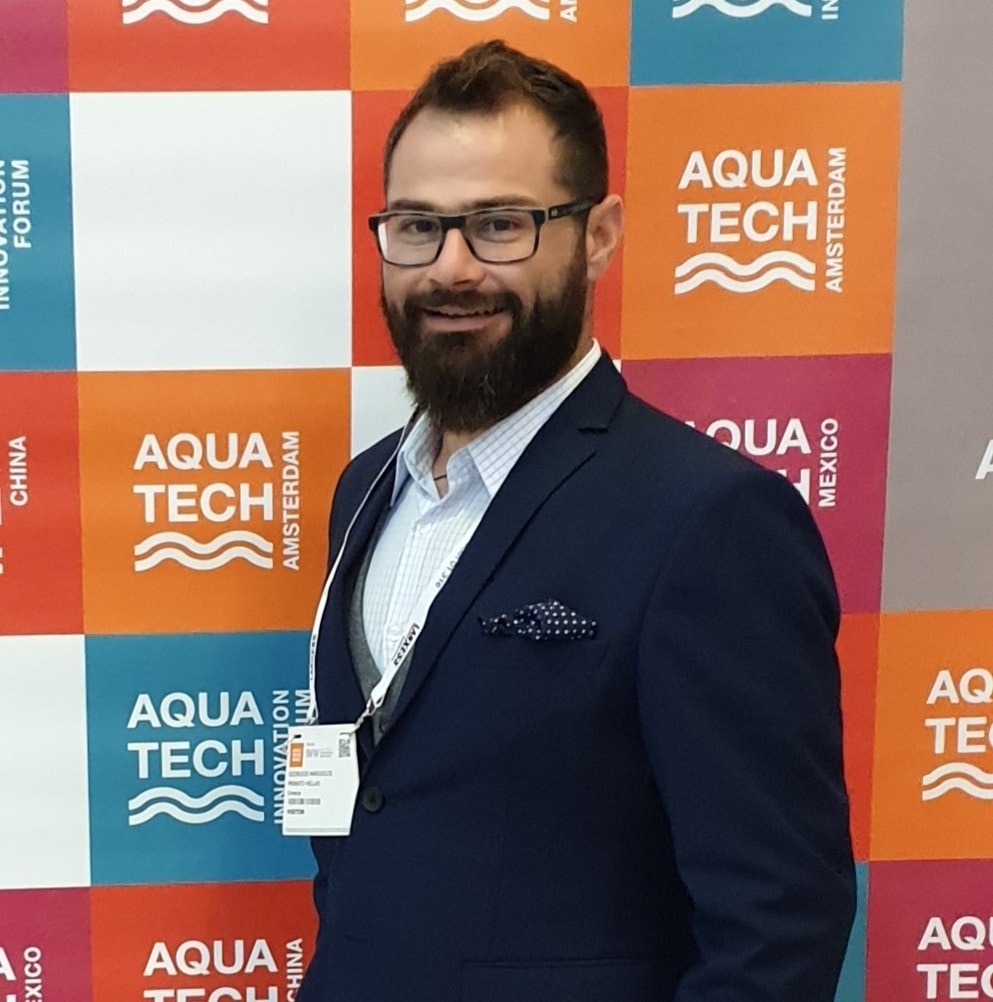
George Margiolos
George Margiolos was born in Thessaloniki and has graduated from the Department of Marketing of the Alexandreio Technological Educational Institute of Thessaloniki. He is fluent in English and (not so fluent) in German.
Ηe has been Project Manager at Avery Dennison - Fastener Division in the UK. There, his main project was to redesign the company's products into new applications so as to become more environmentally friendly. In combination with the fact that in the UK people are more familiar with water filters, he has developed a love for environmentally friendly water filters, which reduce the use of plastic bottles and improving people's quality of life.
Since 2008, he has published over 300 unique educational and informative articles on water filters and new water treatment technologies.
Occasionally, universities and doctoral students request to use George Margiolos' articles in their research because of their quality and uniqueness.


